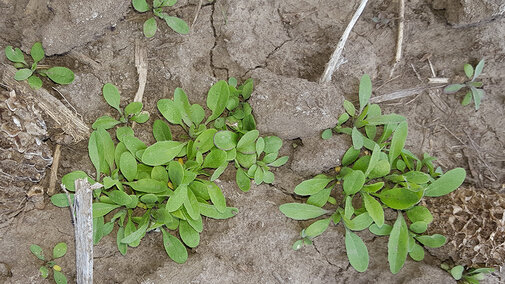Abundant rain the last couple of months in much of eastern Nebraska has promoted the relatively early emergence of winter annual weeds, particularly marestail (Figure 1). Marestail, also known as horseweed in the eastern Corn Belt and as Canada fleabane in eastern Canada, is a winter or summer annual weed in Nebraska.
Historically, marestail was found in waste areas and field edges and along roadsides and railway tracks; however, no-till crop production systems over the last 20 years have favored marestail germination and establishment in agronomic crops in Nebraska.

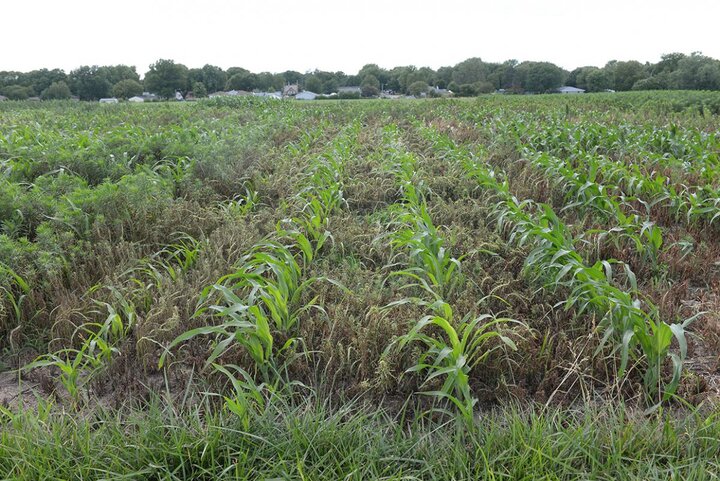
A single marestail plant can produce up to 200,000 seeds, about 80% of which can germinate immediately after falling from a mature plant. Marestail’s small seeds are wind-dispersed and can germinate on the soil surface. Studies show that most marestail plants emerge during fall and survive the winter as basal rosettes (Figure 2). However, significant spring and early summer emergence also have been observed in Nebraska. Therefore, scouting should be done in the fall as well as in early spring to make an effective management plan.
Marestail is the first glyphosate-resistant weed reported in the United States; glyphosate-resistant marestail has now been reported in several states, including Nebraska. Marestail resistant to glyphosate and ALS inhibitors such as Classic®, Permit®, Pursuit®, and Raptor® is becoming more common in south-central and eastern Nebraska; therefore, proper management strategies should be implemented to control this problem weed.
As marestail does not mature until late summer, it competes with corn or soybean throughout the growing season, causing significant yield reduction (Figure 3). Several reports have noted that marestail is sensitive to most herbicides labeled for its control early in its growth, i.e. the rosette stage.
Fall Herbicide Options
Preliminary data for eastern Nebraska suggests that a fall burndown applied with a residual herbicide may eliminate the need for an early spring burndown for marestail control; however, this would not replace an at-planting residual application for management of additional troublesome weed species such as waterhemp and Palmer amaranth. For successful marestail management in the fall, apply herbicides following harvest while weather conditions remain favorable (air temperature above 50°F).
The number of post-emergence herbicides available in corn and soybean for effective control of marestail is limited; therefore, emphasis should be on fall or early spring control.Fall herbicide application is a more consistent strategy because weather conditions frequently interfere with early spring applications.
- Glyphosate-resistant marestail is widespread across eastern Nebraska, thus 1 lb a.e. 2,4-D per acre is recommended as the base treatment for marestail burndown.
- Glyphosate or other products such as Sharpen® or Gramoxone® may be tank-mixed with 2,4-D to provide broader spectrum control of winter annuals and certain perennial weeds.
- We generally do not recommend including residual herbicides in fall applications since they provide little benefit in managing weeds that emerge the following spring; however, if infestation of marestail is high in the field and the field has a history of marestail seed bank, it would be advantageous to add a residual herbicide such as Authority® or Valor® or Autumn™ Super, or other metribuzin products.
- Refer to the most recent Guide for Weed, Disease, and Insect Management in Nebraska for more herbicide options.
Fall herbicide application is unlikely to eliminate the need for a burndown application at planting. Weeds adapted to cool temperatures, such as marestail, are likely to emerge before planting, making it necessary to control them.
Fall Tillage
Tillage is an integral part of the integrated management of marestail. Tillage in the fall or early spring after most marestail plants have emerged can provide effective control (Figure 4).
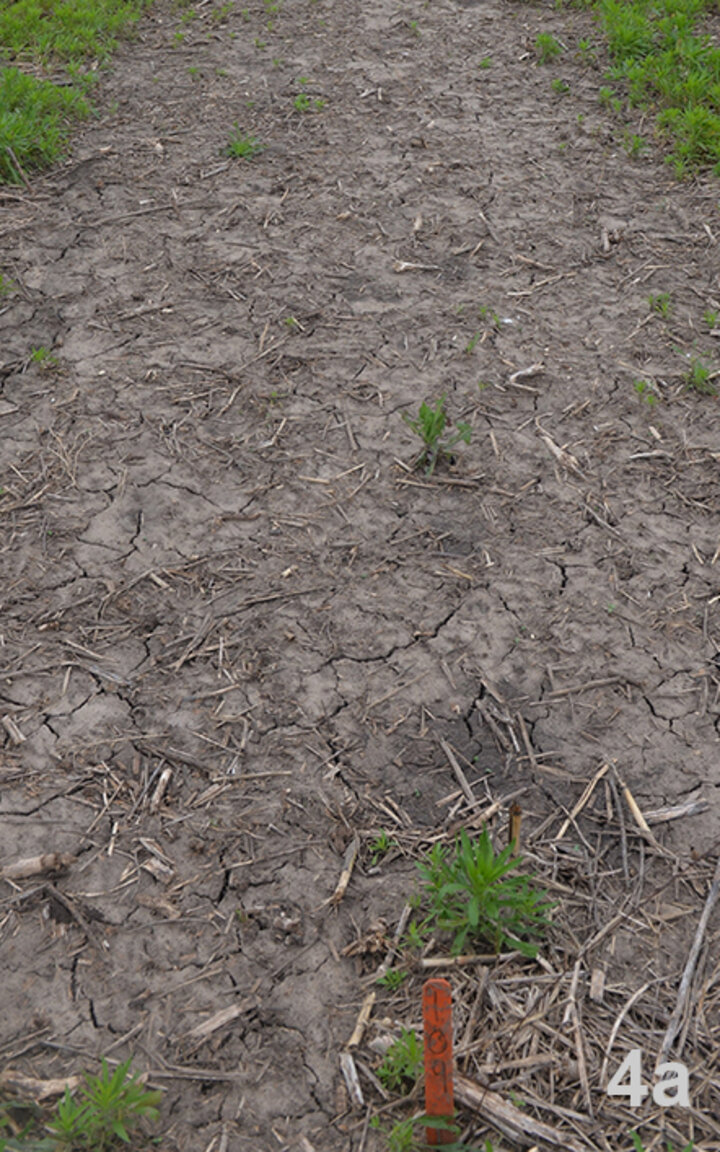
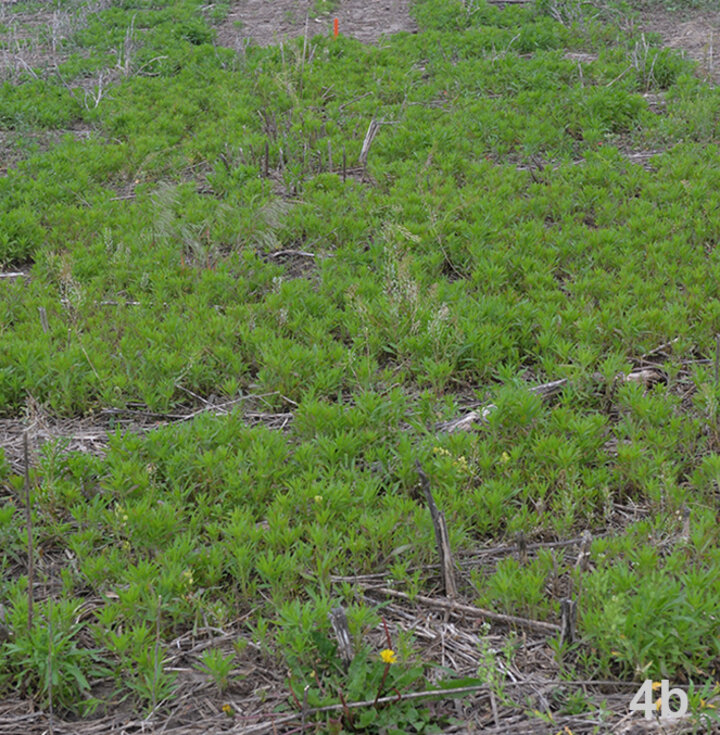
Figure 4. (a) Fall tillage provided effective control of marestail compared with (b) no-tillage in a recent study conducted at UNL. (Photos by Parminder Chahal)
Cover Crops
A good stand of cover crops such as cereal rye planted before or after crop harvest in the fall can suppress marestail and other winter annual weeds. Early planting of cover crops is the key to effective suppression of marestail; cover crops should have emerged by the time marestail emerges. Inter-seeding cover crops while corn is at the reproductive stage is a good practice for the early establishment of cover crops. A recent study at the university’s Agronomy Research Farm (Havelock) reported excellent suppression of marestail in soybean when cereal rye had been interseeded in the previous corn crop at the R6 growth stage (Figure 5).

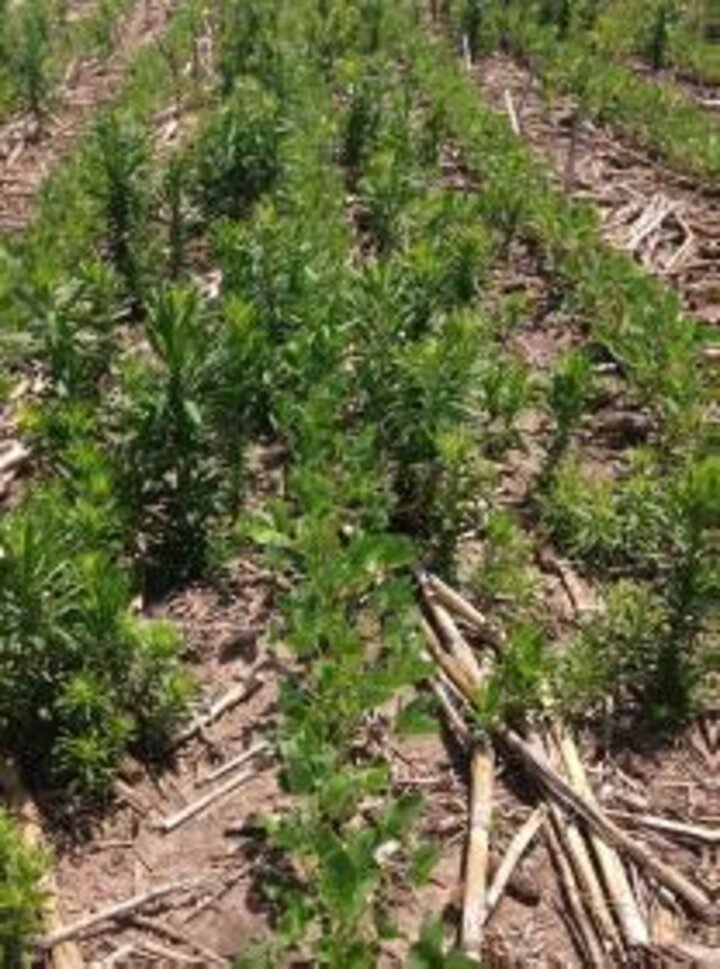
Figure 5. (a) Cereal rye interseeded in R6 corn (previous year) compared with (b) no cover crop in the subsequent soybean in a study conducted at the university's Agronomy Research Farm (Havelock) in Lincoln. Glyphosate-resistant marestail was suppressed significantly in the cereal rye cover crop treatment. (Photos by Angela Bastidas, taken June 20, 2017)
